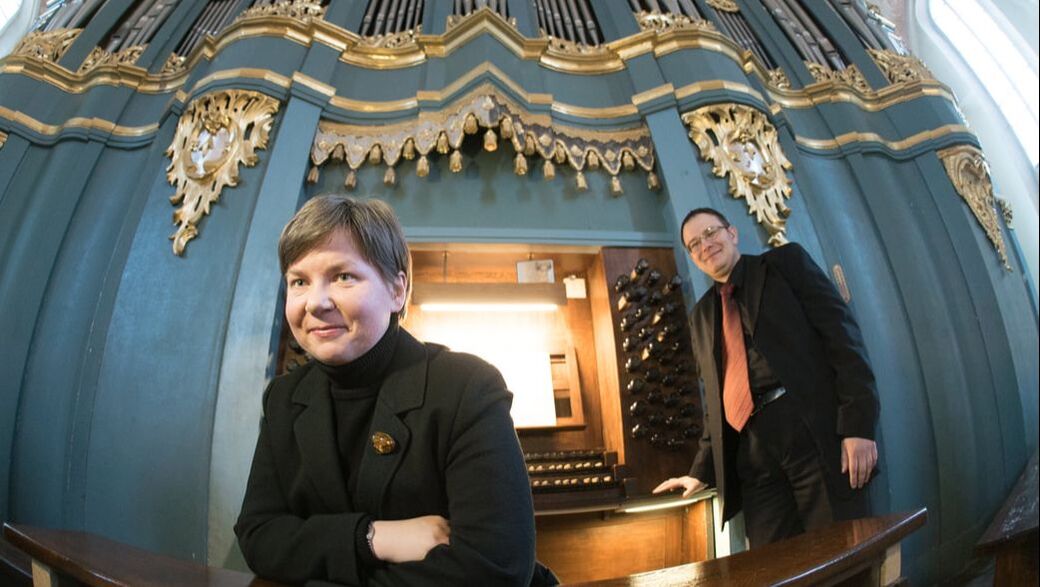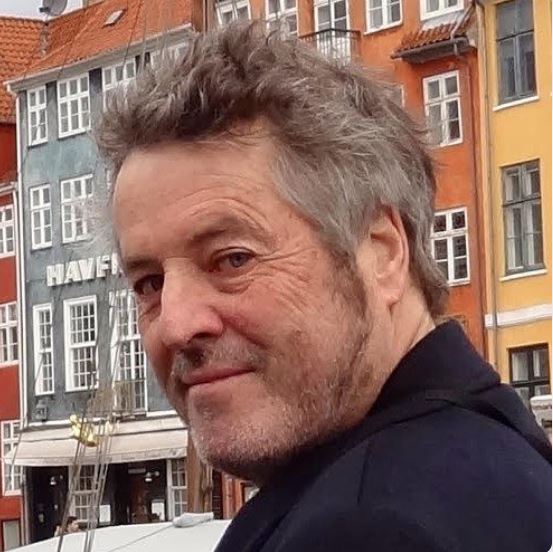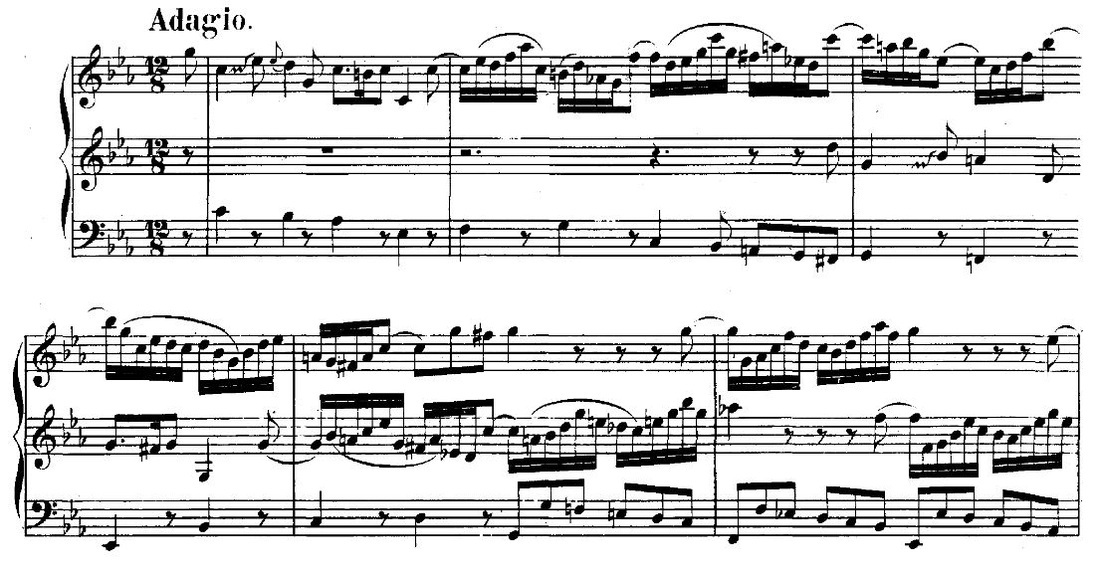SOPP439: More improvisation and some theory on counterpoint and how canons are constructed5/16/2019
Vidas: Hi guys, this is Vidas!
Ausra: And Ausra! V: Let’s start episode 439 of Secrets of Organ Playing Podcast. This question was sent by Ariane, and she writes: “More improvisation and some theory on counterpoint and how canons are constructed - a lot rings a bell now, especially the stuff on consonant intervals and countermovement.” She is our Total Organist student and answered this question in response of my asking her what is she currently working on. A: Okay! V: So, she’s working on improvisation and theory, counterpoint, canons, and she says that a lot of that is familiar to her, now. A: Do you think it’s important for everybody to know the polyphonic techniques that composers use? V: It depends on the goals, of course. If you want to understand the music of great composers, it’s impossible to understand it without getting a good grasp of counterpoint and polyphony. A: Do you think it’s important to know it in depth or not? Or just to be familiar with it? V: Well again, if your goal is just to play the music of other people and understand it to some degree, then what you might do is create some counterpoints and analyze their music from the scores, but not too much, probably concentrating on the performance itself. But if you want to start writing music or improvising music, I think these techniques are indispensable—to know and internalize them. A: Well, what collection would be a good way to start to analyze in order to learn these things? V: You mean canons? A: I mean all polyphonic techniques, because canon is only one of them. V: I always recommend people start where they are, what they are playing, and look for techniques in their own pieces. If they are playing a piece by Franck, for example, they might find a canon or two very easily, because Franck used canons all the time. If they’re playing other composers, let’s say they are playing some baroque music, obviously polyphonic techniques are even more important there. So wherever you are, open the score, and try to find out what you are seeing on the page. A: I think that’s very good advice. V: What would your approach be? A: I would start with probably two-part inventions. Even with the first invention in C major. Basically, Bach used most of the polyphonic techniques in this first invention. V: And you’re right! Those inventions, and later three-part symphonias form a basis for every pianists repertoire, and technique as well! And that was in Bach’s time! He created those short little gems as exercises for his own students! But not only to be played on the harpsichord, but also to be used as examples in composition, so that his students would not only play them, perform them, develop their own techniques, but maybe use them as models for their own creations. This is teaching by example, obviously, and Bach was a champion of that. He almost didn’t write any treatises, just one short page about counterpoint, but basically, his music speaks for itself! A: True, and I wonder how much the world has changed after that, because in Bach’s time, he and his contemporaries wanted students and pupils to study and to take example from them. And nowadays, I think everybody requires originality. And if you will copy something, it will be very bad. V: At first, it’s okay to copy, I think, even today. A: What about authors’ rights? V: When you are a student, I mean. If you are copying a composer who is long dead, who cares? A: But would you achieve much in the area of composition if you would compose in the style of Buxtehude or Pachelbel? V: To some degree, we all start there as beginners in school, and then move on to something which is more innovative and more interesting to our ears and our age. Maybe this classical education won’t last long, maybe a year or two, but even those people who create today avant-garde music, I think they all went through the rigid classical education at some point. Maybe they hated it. That’s why maybe they changed gears later in life, but this classical education gave them something, too. What do you think? A: Yes, I guess you are right. V: Obviously, at the same time when you are studying and playing Bach, if you are really inclined on originality, you would do well on sight-reading music by modern composers—at least twentieth century composers, or even living composers, even better, and see what other people are doing today. And this way, you will discover things that they are not doing, maybe, and you will get more ideas by synthesizing their own ideas! A: Yes, but don’t you feel sometimes that it’s so hard to create something really new, because so many ideas there are already expressed by somebody else? V: I think somebody wiser than I said, “Whoever wants to be original will never be original.” You know, if we focus on originality, this is not the point, because we have to focus on authenticity. It doesn’t have to be new, it has to be yours, this music. And even if you create something really old fashioned, chances are that nobody else has created this, because music has so many thousands and millions and billions and trillions of combinations, that obviously, it’s impossible to exploit all that. It might sound similar to other music, but it’s definitely something new. A: It’s like a miracle, knowing that everything is created only from twelve different sounds. V: Exactly. So, Ariane and others would do really well by starting where they are, looking at music of further composers, and writing down and improvising their own creative things, starting with consonant intervals! That is required for classical counterpoint, and avoiding parallel fifths and octaves, and employing a lot of contrary motion to achieve this. Excellent guys, please send us more of your questions; we love helping you grow. This was Vidas! A: And Ausra! V: And remember: when you practice, A: Miracles happen!
Comments
Welcome to Secrets of Organ Playing Podcast #117!
Today's guest is composer, organist and choir conductor from New Zealand, Nigel Williams. During his student days he was a chorister at Holy Trinity Cathedral in Auckland. In his eleven years in the choir he developed an interest in composing organ and choral music. After graduating from the University of Auckland with a Master's Degree in composition he began a career as a music teacher. He was at the forefront of music education in New Zealand for almost 30 years having taught variously at Westlake Girls High School, St Paul's Collegiate School, Scots College, and Marsden School for Girls. He retired recently from the position of Director of Music at Mill Hill School in London (UK). Currently Nigel is musical director of the Tauranga Civic Choir for whom he is composing a large scale cantata style work for performance in 2019. He has always maintained an active life as a musician and composer in the community. In Hamilton NZ Nigel established a regional orchestra and jazz band festival for schools. Taking advantage of St Paul's Collegiate new Letourneau organ he established an international organ festival to further promote the playing of the organ in New Zealand. He was Director of Music at Hamilton's St Peter's Cathedral for several years and established choral scholarships to ensure a quality of choral singing at the Cathedral and establish an enduring link with Hamilton's Waikato University's Music Department. In Wellington NZ Nigel served as chair of the Wellington regional committee of the New Zealand Choral Federation. During his seven years as musical director of the Bach Choir of Wellington he enjoyed the opportunity of directing over twenty five concerts with an emphasis on the larger scale works of J.S. Bach. He was fortunate to forge a relationship with members of the New Zealand Symphony Orchestra which lead to the formation of the Chiesa Ensemble. Nigel's last concert with the Bach Choir was a complete performance of J.S. Bach’s Mass in B minor. In this conversation, Nigel shares his insights about his love for twelve tone technique, modal music and of course, the polyphony. Enjoy and share your comments below. And don't forget to help spread the word about the SOP Podcast by sharing it with your organist friends. And if you like it, please head over to iTunes and leave a rating and review. This helps to get this podcast in front of more organists who would find it helpful. Thanks for caring. Listen to the conversation Related Links: http://www.nigelwilliamscomposernz.com Nigel's music on Sheet Music Plus: http://www.sheetmusicplus.com/search?Ntt=nigel+williams&aff_id=454957 #AskVidasAndAusra 43 - What practice methods do you suggest for simple fugal improvisation?8/4/2017
Vidas: Let's start episode 43 of #AskVidasAndAusra podcast. And this question was sent by Lilla, and she writes, “Dear Vidas, if you could accept my question, here it is. What practice methods do you suggest for simple fugal improvisation? It might be a good idea to practice it in your writing as well. A good source material method would be tremendous help and would be greatly appreciated. Thank you for all your work. Sincerely, Lilla.”
Interesting question right? Ausra: Yes. Vidas: Not many people ask us question about the improvising fugues. Ausra: Sure, because not many organists improvise them. Vidas: Not many people are brave enough even to try. Ausra: Yes, sure. But as Lilla mentions in her question, that's a good way would be to write it down first of all, or basically start to analyzing other composer's fugues, just to know how they are constructed, then try to write some of them down, and then just go to the practical work. Vidas: Yeah, exactly. What Ausra is mentioning is, before you had any treatises, before you had any method books, and exercise books, what did composers do? They studied other works, they studied a compositions of previous masters, who lived before them. And they, of course, analyzed them and copied them note by note, and maybe arranged them for organ, for other instruments. Like, Johann Sebastian Bach arranged for harpsichord, I think Hortus Musicus by Johann Adam Reincken, these were for string quartets, also contrapuntal works and Bach studied this way. So, before somebody even wrote a treatise on the fugue, or even on contrapuntal imitation, improvisation, they worked practically, analyzing things and writing them down. Ausra: Sure, and you know later you could take Weimar Tabulature by Johann Pachelbel, (not to be confused with Weimar Organ Tabulature) that's an excellent source for improvising. Easy fugues, fuguettes I would say. And then the next step would be, probably to take the Handel's book. Vidas: Exactly, Continuo Exercises According to George Frideric Handel. Ausra: At the beginning, he gives the number to exercises of basso continuo, and later on he gets to the fugues, to improvising fugues based on the basso continuo. Vidas: What do you mean probably is like partimento fugue. Ausra: Yes. Vidas: Where you only have the bass line, and the entrance of the subject notated in the bass clef. Sometimes the clefs change, but they also notate which voice has to enter and according to the principals of polyphonic imitation you add other voices, based on intervals. Ausra: Actually, yes. And after Handel you could proceed to the Langloz Manuscript. And actually this is much harder, much more complex than Handel's book. But after Handel you definitely can try to do it. Vidas: It's a very interesting collection of contrapuntal fugues, which are also simplified in notation, just like Buxtehude would write in his organ praeludiums and toccatas. Those intricate fugal sections, but you could write them in one line, in bass line, they're very lively, fast moving instrumental type of fugues, just like Buxtehude and his friends. Therefore, they're more difficult to play than Handel's. Ausra: Definitely. I remember doing them and that's very hard. Vidas: Yeah. Ausra: Very hard. Vidas: But if you practice them diligently (it's a big collection), if you do all of them, one by one, it gets easier. Ausra: Yes, definitely, just don't practice them all in a given row. You just pick up the easiest first. Vidas: Yeah, with slower note values. Ausra: Yes, definitely. Vidas: And also, these are primary sources, right? Ausra: Yes. Vidas: Composer's at the day, in the 18th century wrote them as exercises for their students. What about a little bit later collections and exercises that people could practice? You know there's a student of Bach, Friedrich Wilhelm Marpurg I think wrote- Ausra: A big treatise, yes, I remember that. Vidas: Treatise on the Fugue. Ausra: Yes. Vidas: That’s in English and in German it's Abhandlung von die Fuge. It is like an analysis of many, many, Bach's fugues, basically Well Tempered Clavier and even Art of Fugue contrapuntal pieces, it's like a predecessor of modern Treatise on the Fugue, and many modern Treatises on the Fugue method books, are based on this, right? Ausra: They are based on Marpurg. And because Bach hasn't left any written sources, Marpurg's book is actually about Bach's legacy. Vidas: Now based on Marpurg is a collection of exercises, which were practiced at the Paris Conservatory in the 19th Century and into 20th century too by Andre Gedalge. It's called Treatise on the Fugue, it has 11 or 12 chapters, and each chapter is based on one particular aspect of the fugue. Like the theme, the counter subject, an answer, episodes, stretto, things like that. It's indispensable for any serious student of fugal improvisation. Ausra: Yes, and good luck with that. Vidas: Now, do you think that people could benefit from practicing Marcel Dupre's Treatise on Improvisation Vol. 2, where he has an entire chapter on the Fugue? Ausra: Definitely, yes. Vidas: But it's for later, because Marcel Dupre himself advises people to go back to Andre Gedalge’s Treatise on the Fugue first, and write down exercises, on the paper with pencil first, and only then try to improvise on the organ from Dupre's treatise. Ausra: So basically, there are three steps. Analyze other composer's work, then try to write Fuges down by yourself. You can compose your own subject or you can pick up some subjects from real fugues and then try to improvise it. Vidas: Three steps. Very good, Ausra, I hope people can take advantage of this, and let us know what specific step is your favorite from this podcast conversation, what would you apply this week, and let us know how it works. And please send us more of your questions, and you can do this easily by subscribing to our blog at www.organduo.lt and replying to any of our messages, we'll be glad to help you out. This was Vidas. Ausra: And Ausra. Vidas: And remember, when you practice - Ausra: Miracles happen. PS Our first e-book "Is It Possible to Learn to Play the Organ When You Are 56 Years Old" is available here for a low introductory price of $2.99 until August 9. If you have already read it, please leave a rating and review. 1. The texture is too thick. If you can't play SATB together, play STB. If you can't play STB, play TB. If you can't play TB, play the bass alone etc.
2. The tempo is too fast. If you can't play at the concert speed, play at the half speed. 3. Insufficient number of repetitions in each step. If you can't play each combination and fragment at least 3 times in a row correctly (5, if you're aiming for the moon; 10, if you're reaching for the stars), you are not ready to go on to the next step. No excuses. Period. Look at your playing. If you are stuck, aren't these the reasons why you may be spinning your wheels? You can change this. Sight-reading: Adagio (p. 7) from the Trio Sonata No. 1 by J.S. Bach. |
DON'T MISS A THING! FREE UPDATES BY EMAIL.Thank you!You have successfully joined our subscriber list.  Photo by Edgaras Kurauskas Photo by Edgaras Kurauskas
Authors
Drs. Vidas Pinkevicius and Ausra Motuzaite-Pinkeviciene Organists of Vilnius University , creators of Secrets of Organ Playing. Our Hauptwerk Setup:
Categories
All
Archives
July 2024
|
This site participates in the Amazon, Thomann and other affiliate programs, the proceeds of which keep it free for anyone to read.
Copyright © 2011-2024 by Vidas Pinkevicius and Ausra Motuzaite-Pinkeviciene.
Terms of Service and Privacy Policy
Copyright © 2011-2024 by Vidas Pinkevicius and Ausra Motuzaite-Pinkeviciene.
Terms of Service and Privacy Policy






 RSS Feed
RSS Feed